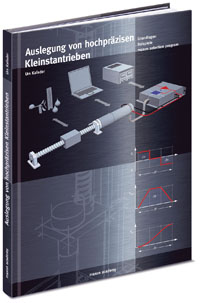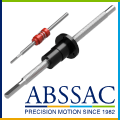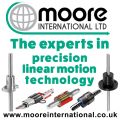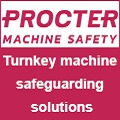
Posted to News on 2nd Jan 2007, 21:07
How to design high-precision microdrives
maxon motor, a supplier of high-precision drives, launched a new book at electronica 2006 entitled 'The design of high-precision microdrives'. The book is part of the maxon academy series and was written by Dr Urs Kafader.

Dr Urs Kafader sparked considerable interest at electronica 2006 when he presented the latest book in the maxon academy series, The design of high-precision microdrives. People passing the stand mixed with invited guests, customers, publishers and stand personnel to find out more.
The author has been responsible for technical training at maxon motor for more than 10 years. In this function, he has already run numerous study programmes and customer seminars in addition to working on the maxon selection program. After studying physics, becoming a Doctor of Natural Sciences and gaining an MBA in Production Sciences, he began his professional career at the Institute for Solid State Physics, ETH Zurich, working on the epitaxy of semi-conductor heterostructures. Always keen to impart knowledge, he gave various seminars and lectures on general and specialist didactics for technical training purposes.
maxon has been a leading specialist in the development of micro DC drives (less than around 500W) for many years. DC motors energised by permanent magnets play a key role in the environment of unbraked miniaturisation in drive technology and in the resultant demand for increased performance in smaller and smaller spaces. Top performance is not only required from the actual performance element, but also in terms of control effectiveness, precision and control.
The selection of individual drive components is becoming more and more complex as a result of all these criteria. It can occasionally be difficult for experienced development engineers to solve a specific drive problem, even if the fundamental drive mechanism (spindle, gearwheel, belt, etc) is pre-determined by the superior design. The choice of parameters (pitch, reduction ratio, etc) is not least determined by the choice of motor or motor/gearhead combination. The dynamic behaviour, control effectiveness and precision (such as positioning accuracy) are reciprocally influenced by all components of the drive system. More and more people unconnected with drive areas suddenly find themselves faced with drive selection issues due to greater system integration.
The basic idea of this book is to offer a straightforward and direct route from formulating the drive problem to finding the solution. Numerous tips and explanations complement the main section, offering the reader a practical guide with which to formulate a specific drive problem as accurately as possible.
The book only focuses on theory where necessary for greater understanding. Notwithstanding this, certain calculations and assessments are required to find the best drive. Readers will therefore come across many topics that they studied in physics - such as mechanics, kinematics and electrical theory - and may find that they need to re-familiarise themselves with these areas.
The book costs EUR50.00 and is available from bookshops under ISBN 3-9520143-4-6.

































